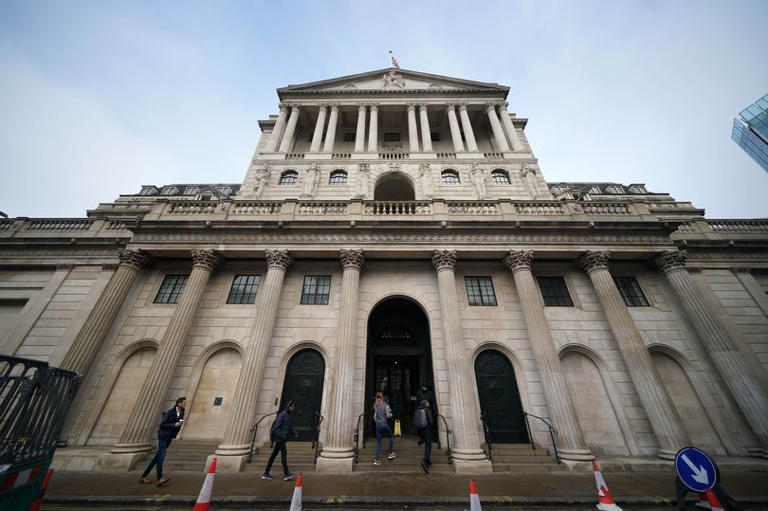UK Inflation Drop 2024: A Closer Look at the Latest Figures and What They Mean for the Economy
UK Inflation Drop 2024 is set to be a hot topic with the release of the latest figures from the Office for National Statistics (ONS). These new numbers are expected to bring some good news, showing a significant decline in inflation. The main question on everyone’s mind is just how substantial this drop will be and how long it might last.
In March, the annual inflation rate as measured by the Consumer Prices Index (CPI) stood at 3.2%. For April, this figure is expected to be much lower, possibly even reaching the government’s target of 2%. The primary reason for this sharp decline is the recent changes in electricity and gas prices. In April 2023, domestic energy bills went up, but this year, they have fallen by about 12% for most households. The energy price cap has also been lowered to £1,690 from £2,500 a year earlier.

© Photograph: WPA/Getty Images
The Impact of Base Effects on Inflation
The concept of “base effects” is crucial to understanding the UK Inflation Drop 2024. Essentially, base effects refer to the influence of last year’s prices on this year’s inflation rate. Since domestic energy prices were much higher last year, the fact that they have decreased this year means that the inflation rate will naturally be lower when compared to last year’s high base.
However, Chancellor Jeremy Hunt is careful not to declare complete victory just yet. He knows that while the figures may show a decrease, the public has experienced a significant rise in prices over the past few years, with inflation reaching a peak of 11.1% in October 2022. This means that even with the UK Inflation Drop 2024, many people may still feel the pinch of the cost of living crisis.
What Lies Ahead: Expectations for Later This Year
It’s important to remember that the current drop in inflation doesn’t necessarily mean the end of inflationary pressures. The Bank of England has indicated that less favorable base effects later this year could push the inflation rate back up to around 2.5% in the second half of 2024. This period is also likely to be significant politically, as it coincides with a probable general election.
Even though prices are not actually falling but simply rising at a slower rate, this is still a better position than when Jeremy Hunt took over as Chancellor. The double-digit inflation rate of 11.1% in October 2022 conjured up memories of the mid-1970s when inflation soared to over 25%, leading to a bailout from the International Monetary Fund (IMF).
The IMF’s Annual Health Check
Interestingly, an IMF team has recently been in the UK conducting their annual health check on the economy. Unlike in 1976, this time the IMF isn’t expected to demand unpopular spending cuts. Instead, their findings might actually support the idea that the UK is moving past the worst of the cost of living crisis. However, the IMF report might also caution against any pre-election tax cuts without planning for potential post-election tax increases or austerity measures.

Interest Rates and the Bank of England’s Cautious Approach
In the short term, the focus will be on what the UK Inflation Drop 2024 means for interest rates. The Bank of England has raised the official cost of borrowing 14 times between December 2021 and August 2023. Since then, it has kept rates unchanged, wanting to be certain that inflation is under control before making any further changes.
The key for the Bank of England isn’t just the headline rate of inflation, which is influenced by global prices, but inflation generated by the domestic economy. For this, the Bank closely watches services-sector inflation, which is currently running at 6%. So, while the headline figure might look good, the details will be crucial.
What Experts Are Saying
Susannah Streeter, head of money and markets at Hargreaves Lansdown, commented on the situation. She noted that if inflation hits the target, there will be high hopes for a rate cut in June. However, she also cautioned that it’s not time to celebrate just yet. Bank of England policymakers need to be confident that inflation will stay at or near the target consistently before they start reducing borrowing costs.
Conclusion: A Positive Step Forward but Challenges Remain
The anticipated UK Inflation Drop 2024 is undoubtedly a positive development. Lower inflation rates are good news for everyone, indicating that the extreme pressures on household budgets may be easing. However, it’s important to remain cautious. While the immediate figures might look promising, the underlying factors and future projections suggest that the path to stable, low inflation might still have some bumps ahead.
For now, the UK is in a better position than it was a year ago, but both the government and the Bank of England will need to continue monitoring the situation closely. The focus will remain on ensuring that inflation is sustainably managed, which means avoiding any hasty policy changes that could disrupt the progress made so far.
UK Inflation Drop 2024 is a step in the right direction, but it’s clear that economic stability requires careful navigation in the months and years to come.
ALSO READ:
“Bank of England Interest Rates: 3 Shocking Reasons Why They’re Holding Us Back”



